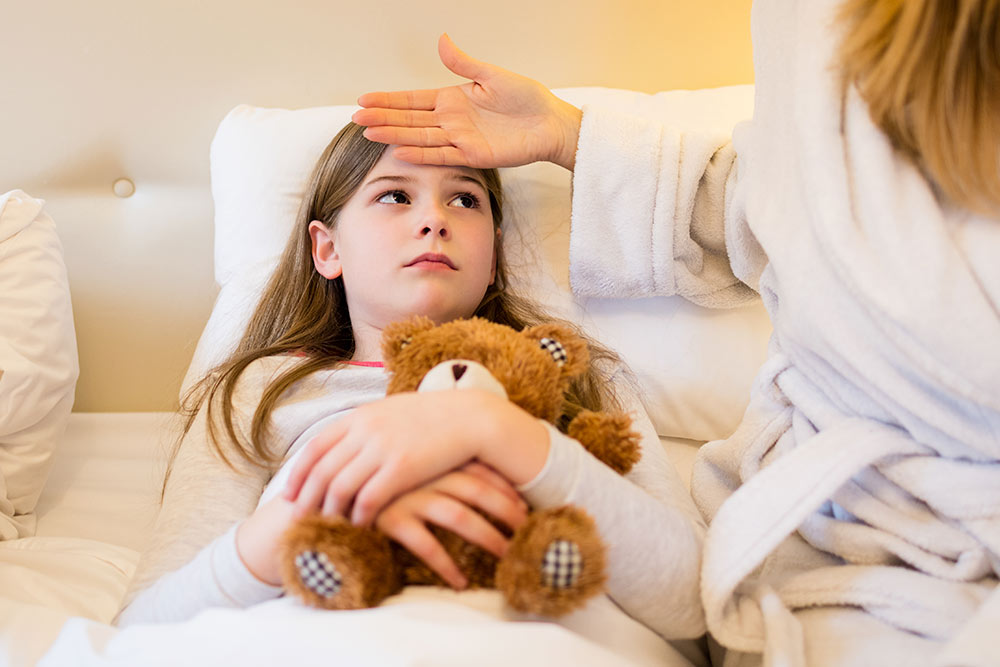There are several ways to reduce a child’s fever that can be done independently at home. However, when doing treatment at home, Mothers are required to be more careful about the condition of the Little One and be aware of symptoms that are already showing signs of danger.
Fever in children is not always dangerous and most will subside on their own within a few days. Fever is actually the body’s reaction to fighting infection naturally.

These infections can be caused by viruses, bacteria, or parasites. Several other conditions, such as autoimmune disease or the effects of immunization, can also cause fever. For mild fever, there are several ways to reduce fever that can be done at home.
How to Lower Children’s Fever at Home
Children who have a fever are characterized by an increase in body temperature reaching 38 ° C or more. You can check your temperature using a thermometer. In addition, children who have a fever may also appear weaker, fussy, cry often, are restless, have trouble sleeping, and don’t want to eat or drink.
As a first aid step to reduce fever in children, you can take the following steps:
Give compress
To reduce your little one’s fever, try giving a compress to his body using a cloth that has been soaked in plain or slightly warm water for 20-30 minutes.
Compresses can be placed on the forehead, chest, stomach, or armpits of your little one while he is sleeping or lying down. Don’t forget to change the compress when it starts to dry. In addition, monitor the child’s body temperature periodically every 1-2 hours after giving the compress.
Avoid thick clothes
Choose clothes for your little one with comfortable materials and not too thick. This is because when wearing thick clothes, the body will be hot and difficult to remove body heat, so the fever is difficult to subside.
If your little one feels feverish or cold, wear comfortable clothes that can absorb sweat, and cover his body with a thin blanket.
Give children enough food and drink
Make sure your baby’s fluid and nutritional needs are adequate to prevent him from becoming dehydrated. If you are still giving your little one exclusive breastfeeding, make sure he is breastfed as often as possible.
However, if your little one has started consuming solid food or solid food, you can continue breastfeeding while giving enough water. The choice of drinking water at home must meet applicable standards, such as colorless, tasteless, odorless, and does not contain substances that can harm the body.
Also make sure the water you consume comes from protected water sources, so that the natural mineral content in it is maintained.
Provision of food and fluid intake when sick must still be selective. If your child is 1 year old or older, you can give an electrolyte isotonic drink that has more benefits when you have a fever.
The reason is, the child’s body will excrete more fluids through sweat and urine when he has a fever. These fluids need to be replaced to avoid dehydration. Giving this electrolyte isotonic drink is absorbed more quickly by the body to replace body fluids lost when sweating more.
Keep the room temperature
Make sure the room temperature remains cool and comfortable for your little one. You can turn on the air conditioner, but make sure the temperature is not too cold. You can also use the fan at a low speed.
Mothers need to remember, avoid directing the fan or air conditioner to face your little one’s body because it can make him cold.
Bathe with warm water
When the child has a fever, Mother is still allowed to bathe the Little One as long as it uses warm water. Avoid using cold water, because it can cause his body temperature to rise and make him shiver from the cold.
Giving fever-reducing drugs
If needed, you can use a child’s fever-reducing medication, such as paracetamol. With a note, the dose of paracetamol must be adjusted to the age and weight of the child or according to the instructions for use listed on the drug packaging.
This medicine is not recommended to be given to infants less than 2 months old without a doctor’s supervision.